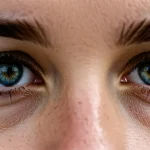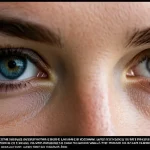Evolution of UK Women’s Fashion: An Overview
Examining the fashion evolution UK reveals a dynamic journey shaped by shifting social, cultural, and historical forces. The story begins with the restrained elegance of early 20th-century styles, moves through wartime practicality, and embraces the creativity of youth-driven movements. Each decade showcases distinct styles influenced by economic circumstances, political landscapes, and changing gender roles.
A key approach to understanding UK women’s fashion history is to analyze it decade by decade. This allows us to appreciate how attitudes towards femininity, functionality, and self-expression evolved over time. From the structured silhouettes of Edwardian fashion to the rebellious spirit of the 1970s punk style UK, each era offers a snapshot of society’s mood and priorities.
This might interest you : Explore affordable montessori toys for creative learning
The British fashion timeline also reflects the powerful role of designers, cultural icons, and subcultures in redefining norms. Notably, trends often coincided with major historical events, such as wars or social movements, which prompted practical adjustments or radical reinventions. Understanding this context enriches our appreciation of fashion not just as clothing, but as a mirror of Britain’s multifaceted identity.
Early 20th Century: From Edwardian Elegance to Flapper Freedom
The early 20th century marked a significant turning point in the UK women’s fashion history, transitioning from the refined Edwardian fashion UK to bolder, freer styles. Edwardian fashion, dominant until the 1910s, emphasized modesty with high collars, corsets, and long skirts, reflecting strict societal norms that valued formality and femininity.
Also to read : What Are the Latest Style Icons of UK Women’s Fashion?
By the 1920s, the fashion evolution UK embraced the revolutionary 1920s flapper style, symbolizing women’s newfound independence and social liberation. Hemlines rose dramatically, reaching the knee, and relaxed silhouettes replaced rigid corsetry. This shift echoed broader cultural changes, including women’s suffrage and shifting gender roles. The flapper look featured dropped waists, bobbed haircuts, and decorative beadwork, which challenged traditional beauty ideals.
Iconic figures like Coco Chanel and designers across Britain contributed to this metamorphosis, encouraging simplicity and comfort while retaining elegance. The British fashion timeline during this period captures a vivid transformation from constrained to expressive attire, illustrating how fashion mirrored society’s evolving values and the growing desire for personal freedom. Understanding these changes highlights the intimate link between clothing and social change in pre-war Britain.
Mid-20th Century: Wartime Practicality and Postwar Glamour
The fashion evolution UK during the mid-20th century was deeply shaped by the impact of the World Wars. The 1940s wartime fashion reflected urgent practical needs: fabric rationing led to simplified designs and utility clothing that prioritized durability over decoration. Women’s clothing adopted clean lines, shorter hemlines, and functional elements like pockets and sturdy buttons, echoing both necessity and a collective spirit of resilience.
Postwar Britain saw a dramatic shift in the British fashion timeline with the introduction of Christian Dior’s “New Look.” This aesthetic emphasized femininity through cinched waists, full skirts, and luxurious fabrics, heralding a return to glamour after years of austerity. The 1950s style UK combined elegance with optimism, as women embraced more elaborate outfits that celebrated renewed prosperity.
This era highlighted how UK women’s fashion history was influenced by both external events and shifting societal moods. Wartime fashion underscored practicality and unity, while the postwar period embraced beauty and extravagance. Together, these decades illustrate how historical context can swiftly redirect fashion trends, making them not only a style statement but a reflection of the times.
Swinging Sixties to Seventies Rebellion
The fashion evolution UK from the 1960s through the 1970s reflects a vibrant shift driven by youth culture and social change. The 1960s mod fashion emerged as a symbol of liberation, featuring geometric patterns, bold colors, and minis—styles made popular by British fashion icons like Mary Quant. This period marked a departure from postwar conservatism, embracing playful, experimental looks that aligned with an optimistic and rebellious spirit.
As the British fashion timeline progressed into the 1970s, the atmosphere grew edgier. The 1970s punk style UK arose as a provocative counterculture movement. Its characteristic elements—ripped clothing, safety pins, leather jackets—challenged mainstream norms and celebrated individualism and political dissent. This era showcased how fashion could become a powerful mode of social expression, intertwined deeply with music and youth subcultures.
Designers and street style intertwined, with British fashion icons shaping perceptions locally and globally. The decade-by-decade analysis highlights how the UK women’s fashion history during these two decades embraced diversity and defiance, underscoring fashion’s role not only in aesthetics but in cultural identity and resistance.
Rapid Changes in the Eighties and Nineties
The fashion evolution UK during the 1980s and 1990s marked a notable shift, emphasizing bold expression and cultural dynamism. The 1980s fashion UK was characterized by power dressing, featuring strong shoulders, tailored suits, and vibrant colors, reflecting women’s growing workplace presence and empowerment. Designer labels gained immense popularity, representing status and prestige within the evolving British fashion timeline. Brands like Vivienne Westwood and Jean Muir influenced trends that blended classic tailoring with daring innovation.
Transitioning into the 1990s, the 1990s Britpop style rose prominently, mirroring a youthful rebellion and distinct national pride. Casual looks like baggy jeans, flannel shirts, and band t-shirts became staples, closely tied to iconic music movements such as Britpop and rave culture. This era’s relaxed aesthetics contrasted sharply with the previous decade’s polished silhouettes, illustrating how the UK women’s fashion history embraced versatility.
Music and media played pivotal roles in shaping these decades’ styles, with artists and TV personalities influencing consumer tastes. This period’s duality of power and casual wear underlines the rich complexity within the British fashion timeline, showcasing how cultural shifts and designer visions drove an era of rapid, diverse change.
The 21st Century: Diversity, Sustainability, and Digital Influence
The fashion evolution UK in the 21st century reflects unprecedented diversity and rapid change shaped by technology, culture, and growing environmental awareness. The 2000s fashion trends UK spotlighted eclectic styles—from bold logos to minimalist chic—mirroring a fragmented, globalised market. This period marked a shift towards personalization, with influences drawn from streetwear, luxury brands, and vintage revivals.
As awareness about the environmental impact of fashion grew, sustainable fashion Britain emerged as a crucial movement. Increasingly, designers and consumers prioritized ethical production, eco-friendly materials, and circular economy principles. This ethos became a defining feature within the broader UK women’s fashion history, influencing buying habits and design approaches.
The rise of social media revolutionized the British fashion timeline, with social media fashion influencers UK becoming powerful tastemakers. Platforms like Instagram and TikTok gave rise to new forms of style dissemination, where viral trends and individual creativity reshaped mainstream fashion. This digital influence democratized fashion, enabling greater accessibility and real-time interaction between brands and consumers.
Together, these developments illustrate how the 21st century’s fashion evolution UK combines tradition with innovation, social consciousness, and digital connectivity to redefine contemporary style in Britain.



